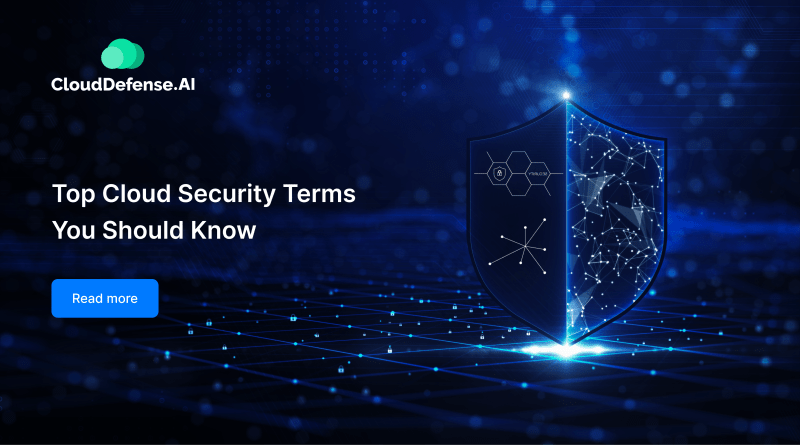In the modern era, the significance of understanding cloud security has grown substantially as organizations increasingly migrate their operations to the cloud. Cloud security involves a complex landscape of acronyms, industry-specific terminology, and vendor-specific terms that can be bewildering for both users and IT professionals. To effectively navigate and utilize cloud security services, it is essential to familiarize oneself with a variety of key cloud security terms. This knowledge base can serve as a valuable asset in today’s cloud-centric environment.
List of Top Cloud Security Terms
API (Application Program Interface): A set of procedures enabling applications to access features or data of other applications, OS, or services.
Agent: Special software integrated into machines and applications for security-related tasks.
Agent-Based Security: Security controls and data collection through agents, suitable for poor network connections.
APT (Advanced Persistent Threat): A type of cyber attack where attackers breach and persistently target an account or network.
AppSec (Application Security): Security measures to protect deployed cloud applications from threats.
Agentless Security: Identifying and fixing anomalies or vulnerabilities without installing software directly on devices.
Behavioral Analysis: Monitoring a file’s behavior to identify malicious background processes.
Breach Response: Actions taken to mitigate damage caused by a cloud breach.
CASB (Cloud Access Security Broker): A tool for monitoring and controlling cloud application usage.
Cloud Control Plane: Responsible for controlling data movement within a network.
CNAPP (Cloud-Native Application Protection Platform): A holistic cloud security model for the entire application lifecycle.
CSPM (Cloud Security Posture Management): Identifying and remediating security issues in cloud configurations.
CSP (Cloud Service Provider): Third-party provider of cloud infrastructure and services.
Container Security: Protecting container-based workloads with security tools and measures.
CI/CD (Continuous Integration/Continuous Delivery): Automated processes for developing, testing, and delivering cloud applications.
DRM (Digital Rights Management): Access control technologies for limiting data use in the cloud.
Data Classification: Categorizing and encrypting data based on sensitivity.
DDoS (Distributed Denial of Service): A malicious attack overwhelming network traffic to render a system temporarily unavailable.
DevSecOps: Collaborative approach integrating security into software development and delivery.
DLP (Data Leak Prevention): Preventing unauthorized sharing of sensitive data.
Entitlements: Permissions allowing user access to specific parts of a tool.
Encryption: Converting data into a secret form to protect sensitive information.
Firewall: Network security device monitoring and filtering incoming/outgoing traffic.
GCP (Google Cloud Platform): Suite of cloud computing services offered by Google.
Governance: Rules and protocols for ensuring data security and risk mitigation.
IAM (Identity Access Management): Framework for managing user access to technology resources.
Image Scanning: Assessing container or virtual device operating system for vulnerabilities.
ISO 27001: International security standard for creating an information security management system.
Integration: Bringing together multiple cloud security services into a unified tool.
IaaS (Infrastructure as a Service): Cloud computing offering virtualized resources over the internet.
Kubernetes (K8): Open-source container system for deploying and managing services at scale.
KSPM (Kubernetes Security Posture Management): Automated security and compliance management for Kubernetes.
LPA (Least Privileged Access): Restricting user access to the minimum required for their role.
Log4Shell: Critical vulnerability in the Log4J logging utility.
Malware: Malicious software, including viruses, ransomware, and trojans.
MITM (Man-in-the-Middle): Attack where an attacker intercepts and monitors traffic between a user and an application.
NVD (National Vulnerability Database): Repository of vulnerability information for security automation.
Phishing: Cyberattack aimed at stealing data through deceptive messages.
PoLP (Principle of Least Privilege): Users given minimum access needed to reduce vulnerabilities.
Quarantine: Encrypting or restricting access to files until authorized for safe access.
Ransomware: Malware encrypting files and demanding a ransom for decryption.
Runtime Protection: Assessing vulnerabilities and attack paths to remediate risks.
Risk Prioritization: Determining the priority of vulnerabilities and assets for protection.
Spoofing: Attackers masquerade as trusted sources to gain unauthorized access.
SOC 2 (Service Organization Control 2): Compliance framework for security controls auditing.
Spyware: Malware used to spy on user activities on devices.
Shared Responsibility Model: Framework for assigning security and compliance responsibilities between users and cloud service providers.
Shift Left: Implementing security early in the development cycle to reduce costs and mitigate risks.
Sandboxing: Controlled testing of links or files to assess their impact on system defense.
Shadow SaaS: Unauthorized cloud applications linked to an organization’s SaaS or IaaS.
Threat Detection: Assessing the security ecosystem for signs of malicious activity.
Tokens: Authorization keys issued to devices for API interaction.
TSC (Trust Services Criteria): Framework for evaluating and monitoring application security controls.
URL Analysis: Analyzing links for malicious or unexpected behavior.
Vulnerability Assessment: Monitoring, discovering, and prioritizing cloud infrastructure issues.
Zero Trust: Security architecture requiring authentication and inspection before granting access rights.
We are optimistic that this extensive compilation of key cloud security terminology will prove to be a valuable security reference for you, aiding in your understanding of these concepts. By perusing this list, you will be better equipped to navigate security services efficiently, eliminating the need for time-consuming searches to decipher their meanings.



















